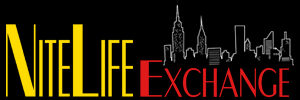
By Marilyn Lester***From time to time we’ve covered the news about the Mayor’s Office of Nightlife since its inception two years ago. At that time, in response to increasing complaints about late-night disturbances of the peace, mainly on the Lower East Side, Ariel Palitz was named head of the initiative. Her mandate was to manage what had become an unbridled scene of raucous partying and the resultant noise, trash and traffic generated well into the wee hours of the morning. Prior to the New York State PAUSE and citywide shutdown, how was the Office doing two years on? According to advocacy group, Neighborhoods United (NU), not too well. Now, as we await a City returning to some degree of normalcy, the role of the Nightlife Office should take on extra importance. Can it? Will it? Those answers are a matter of conjecture, but understanding what’s been done, or not done, so far can imply answers.
Initially, in 2018, Palitz went borough to borough on a “listening tour” of town hall meetings. Attendees were encouraged to vent about problems and concerns and also to present ideas toward possible solutions. One result was a program launched to mediate complaints, typically sound disputes, between residents and venues. However, such a program has has long existed among local Community Boards in which residents must provide supporting evidence of the complaint. It’s not clear, however, if these mediations by either agency actually do any good, since enforcement of valid complaints is problematic.

But more troubling, according to NU is the lack of transparency from the Office of Nightlife. There’s been a lack of public reportage on the mediation program; the lack of data does not allow the public it serves to know how many mediations were conducted, the circumstances of the mediations or the outcomes, raising questions about the effectiveness and accountability of the Office and how it uses taxpayer dollars in service of its mission. By law the Office of Nightlife must issue an annual report on its activities, which has not yet happened (the first was due by September 19, 2020).
NU has voiced its concerns to the Nightlife Mayor’s Office, which include increases in violent crime, fighting, vandalism, traffic congestion, excessive noise, over-serving alcohol, lack of enforcement, and skyrocketing rents that drive out other small businesses—plus the correspondence of these issues to liquor license over-saturation. NU also proposed solutions, including:
• Enforcement of the 500 Foot Rule, a law that limits the number of liquor licenses within a 500 foot radius.
• Increasing the number of inspectors and the frequency of their visits
• A publicly-accessible database of all bars detailing the legally-binding stipulations associated with their licenses, as well as complaints lodged against them.
Palitz’s response to the group, it says, was that “she hears us.” NU’s conclusion is that the “lack of transparency, lack of communication, lack of any visible strategy, and ignorance of the issues faced by residents, is that Palitz and de Blasio haven’t listened.”

However, in October 2019, the Lower East Side Late-Night Quality of Life Improvement Plan for a six-block area of the Lower East Side was unveiled by the Nightlife Office. The Plan called for the enactment of new parking regulations to eliminate night street parking and ease congestion and noise pollution from honking, new street sweeping hours to align with when bars close, extended street sweeping schedule along Ludlow Street and increased surveillance of unlicensed for-hire vehicles.
In a post-pandemic reality, it’s unclear if the work of the Office to date has been truly effective, or if deficiencies pointed out by Neighborhoods United will be addressed. The Nightlife Office did conduct a now closed “Survey for Nightlife Workers, Freelancers, and Businesses Affected by COVID-19.” The results have yet to be released. As to the future, it’s glaringly unclear what the City’s nightlife will look like in an undoubtedly changed new world and what role the Mayor’s Office of Nightlife will have in it.
So, for now, we all wait.
To learn more, about the the Mayor’s Office of Nightlife click here.








Leave a Reply